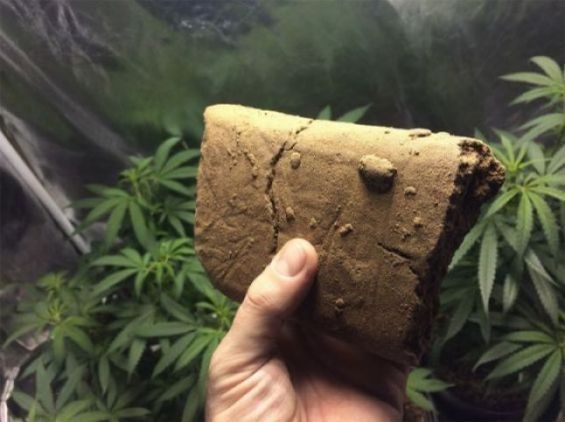In November 2019, the European Monitoring Center for Drugs and Drug Addiction (EMCDDA) released its report on European drug markets. The report is a strategic analysis of data compiled on European drug markets, including links with Morocco.
Indeed, the report focuses on organized crime groups (OCG), especially those smuggling cannabis resin imported from Morocco. «Cooperation between European nationals engaged in cannabis production and Moroccan producers has led to the introduction of new cannabis strains and production methods in Morocco», the report read.
It also acknowledges that «OCGs of Moroccan origin still play a major role in the trafficking of cannabis resin».
Cannabis hybrids of various origins
The report tells how some cannabis resin producers based in Morocco have adapted their production techniques to improve the quality of their product, mainly through the introduction of varieties of crops with higher yields.
«European producers established in the Rif Mountains have introduced cannabis hybrids of various origins that allow much higher resin yields and THC contents, replacing traditional varieties», the same source said.
It recalls that Spain remains the main entry point into the EU, but specifies that smuggling resin produced in Morocco and Lebanon now affects the Mediterranean Sea region as a whole. This has been experienced after Libya has become a «potential weak point in the region that may be exploited by traffickers».
Individuals linked to Dutch coffee shops have established themselves in the Rif region of Morocco, where they produce a range of extracts, including high-quality cannabis resin. «These changes in Morocco are a major contributor to the dramatic increase in the potency of cannabis resin seized in many European countries since 2012», the authors of the report said.
Moroccan organized crime groups and control of the Antwerp port
As for smuggling methods, the document notes that cannabis resin continues to be transported by trucks on ferries and sea containers, as well as leisure and fishing boats.
Moreover, the use of speedboats that «can transport up to 3 tonnes has increased considerably over the last few years, prompting the Spanish government to impose restrictions on the use of such vessels».
The report also looks at heroin and cocaine smuggling. It emphasizes that African mafia groups are also involved in the trafficking and distribution of heroin, namely «nationals from Ghana, Senegal and The Gambia, as well as Morocco and Tunisia».
As for cocaine trafficking, the document stresses that several mafia groups, including those made up of Moroccans, are becoming increasingly important. Cocaine distribution in Europe is generally carried out by national OCGs. In some countries, Albanian, Moroccan and West African OCGs as well as outlaw biker gangs also play a major role.
The report even ensures that Moroccan OCGs have long been key players in the port of Antwerp and that they have been much more involved in the trafficking and distribution of cocaine in Europe in recent years.
However, cannabis remains the largest drug market in the EU and a major source of income for the criminal economy. «With around 25 million people claiming to have used drugs in the past year, the retail cannabis market is conservatively estimated to be at least € 11.6 billion», it concludes.




 chargement...
chargement...











